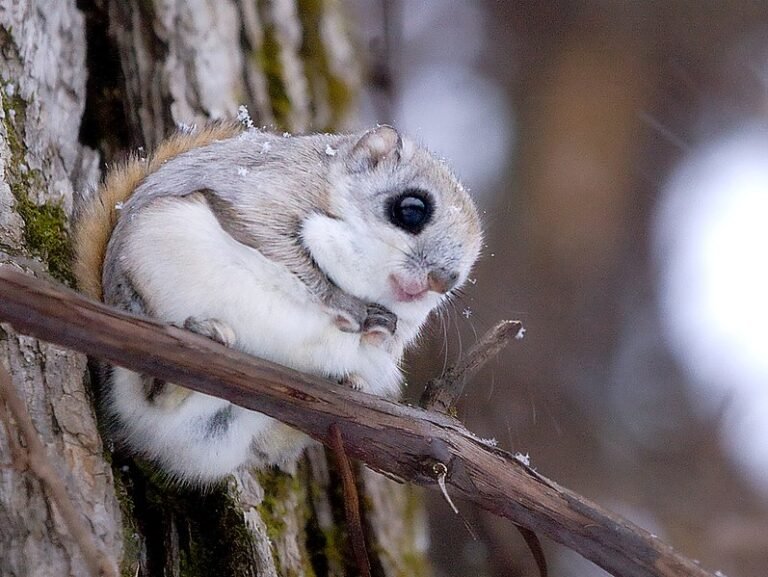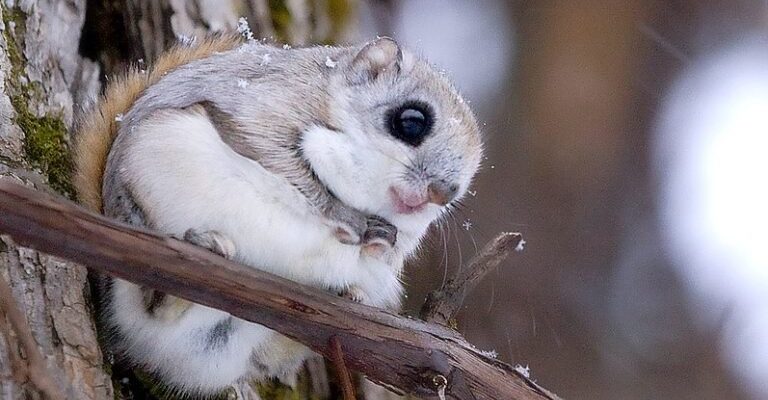
Flying squirrels may have a cute, fluffy appearance, but they’re incredibly resilient. They can be found in various habitats, from dense forests to open woodlands and even urban areas. Their ability to adapt to changing conditions is a fascinating aspect of their survival strategy. So, let’s dive into how these remarkable rodents manage to navigate through life in harsh environments.
Physical Adaptations: Nature’s Design
When we talk about how flying squirrels survive, we can’t overlook their physical adaptations. These adaptations are like the nifty tools in their survival kit, helping them tackle various challenges. First off, flying squirrels possess a unique patagium, which is a membrane that extends from their wrists to their ankles. This feature allows them to glide through the air, covering impressive distances—sometimes up to 150 feet! Imagine soaring from one tree to another without ever touching the ground; it’s like their own version of a superhero cape.
Additionally, their large eyes are specially adapted for night vision, which is crucial because flying squirrels are nocturnal. This means they’re most active at night, taking advantage of the dark to avoid predators and search for food. Their keen sense of smell and excellent hearing also aid them in locating food and detecting danger. It’s kind of like having built-in night goggles and a radar system, making them well-equipped for survival.
Resourcefulness: Finding Food
You might be wondering how flying squirrels manage to find food in harsh environments. Well, they’re pretty resourceful! These cute critters primarily eat a diet of fruits, nuts, and fungi. In challenging weather, when food might be scarce, they’ve been known to stash away food in tree hollows to ensure they have something to eat later on. This habit of food caching is like having a pantry stocked for the winter.
During colder months, when trees shed their leaves and food is harder to find, flying squirrels rely on their memory to locate these hidden food sources. Research has shown they can remember where they’ve hidden food for months! If that’s not impressive, I don’t know what is. This resourcefulness is key to their survival, especially when the environment is less than forgiving.
Social Behavior: Teaming Up for Safety
Flying squirrels are not loners; they often live in small groups. This social behavior plays a significant role in their survival. When living in groups, they can keep a lookout for each other, alerting one another to potential threats. It’s a bit like having a tight-knit community where everyone watches each other’s backs.
In these groups, they also share nesting sites, which helps them conserve warmth during chilly nights. When temperatures drop, huddling together in a warm nest can make a significant difference. This approach not only keeps them safe from cold weather but also helps them maintain their body heat, an important factor in harsh environments.
Climate Adaptations: Thriving in Diverse Weather
Flying squirrels are found in various climates, from temperate forests to subtropical regions. This adaptability is essential for surviving in areas with extreme temperature variations. They have thick fur that keeps them warm during the cold months and softer fur during the warmer seasons, allowing them to regulate their body temperature efficiently.
Moreover, flying squirrels have developed habits to cope with different weather conditions. For instance, during heavy rains or storms, they seek shelter in tree hollows, which provide safety and a dry place to ride out the storm. It’s like having a cozy home to retreat to, no matter what Mother Nature throws their way.
Camouflage: Blending into Nature
One of the most fascinating survival tactics of flying squirrels is their ability to blend into their surroundings. Their fur, which ranges from gray to reddish-brown, helps them stay hidden among the bark of trees. This camouflage is invaluable when predators like owls or hawks are on the prowl.
The way they position themselves on branches, along with their ability to remain still, makes it even harder for potential threats to spot them. It’s almost like they’re playing hide and seek with the forest. This skill of blending in not only protects them from predators but also allows them to approach food sources without being noticed.
Impact of Human Development: Adapting to Urban Life
Surprisingly, flying squirrels can adapt to urban environments as well. As humans expand their cities, these little creatures have found ways to thrive alongside us. Urban parks and green spaces provide new habitats, and flying squirrels often take advantage of the trees we plant.
Additionally, they’re resourceful enough to find food scraps from human activities. Even though urban living comes with challenges, such as traffic and pollution, flying squirrels have shown a remarkable ability to adjust. This adaptability is a testament to their resilience, showing that even in tough conditions, they can find a way to survive.
In summary, flying squirrels are truly remarkable animals, showcasing an impressive array of adaptations that allow them to thrive in harsh environments. From their unique physical features to their clever social behaviors, they’ve developed a toolkit that helps them navigate through the challenges of life.
So next time you think about flying squirrels, remember they’re not just cute creatures gliding through the trees. They’re survivors, using their skills to tackle the hardships of their habitats. Whether it’s through resourcefulness, teamwork, or simply blending into their environment, these flying acrobats of the animal kingdom offer a vivid example of nature’s ingenuity and resilience.

